George Washington (February 22, 1732 – December 14, 1799) was an American political and military leader who played a key role in the American Revolution. When the Revolutionary War broke out in 1775, Congress created the Continental Army and George Washington was appointed as its Commander-In-Chief. Washington took enormous duties during the war. He plotted the overall strategy of the war along with the Congress. He organized and trained the army and maintained their morale. Most importantly his stature as well as his political and personal skill was instrumental to make the Congress, the army, the French and the states work towards a common goal. Washington actively led his men against the main British forces in 1775 – 77 and then again in 1781. Though he lost battles he never surrendered his army during the war. Washington led the American troops to several major victories, the most important of which were the Battle of Trenton and the Siege of Yorktown. Here is a summary of the role of George Washington during the American Revolution.
The Intolerable Acts
The seeds of the American Revolution were laid when the British Parliament imposed taxes on its 13 American colonies. This was opposed by the Patriots, including George Washington, as they believed that the British Parliament, to which they elected no representatives, had no right to tax them. On December 16, 1773, a group of men boarded British ships and dumped all 342 chests of tea, worth £10,000, into into the Boston Harbor. The event became known as the Boston Tea Party. In response to the Boston Tea Party, the British government enforced four Acts to punish the Massachusetts colonists. These became known as the Intolerable Acts in America. George Washington called these Acts “an invasion of our rights and privileges”.
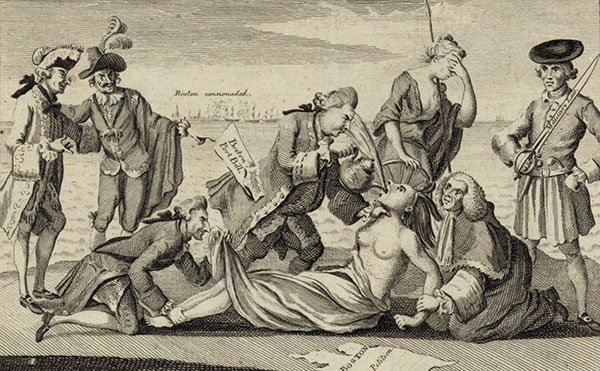
Commander-In-Chief of the Continental Army
In response to the Intolerable Acts, the First Continental Congress was formed on September 5, 1774 and Washington was one of the delegates from Virginia. The American Revolutionary War broke out with the Battles of Lexington and Concord on April 19, 1775. When he heard the news, Washington rushed to join the Continental Congress in Philadelphia. The Continental Army was created on June 14, 1775 and George Washington was unanimously elected as its Commander-In-Chief by Congress the next day. There were several reasons for Washington being chosen to command the Continental Army. He had prior military experience as he had served in the British army during the French and Indian War which took place between 1754 and 1763. Moreover, his prestige and charisma, among other things, made him the dominant choice.
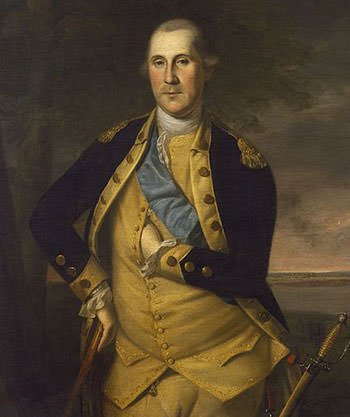
Siege of Boston
After being appointed Commander-In-Chief, Washington headed towards Boston and during his march he became a symbol of the Patriot cause. He assumed command of the colonial forces outside Boston on July 3, 1775. His first steps were to train the undisciplined army and organize the militia regiments into an effective fighting force. The Battles of Lexington and Concord were followed by the Siege of Boston. On March 9, 1776, Washington’s troops bombarded British ships in Boston harbor; and on March 17, the British and the Loyalists began evacuating the city aboard 120 ships. The Siege of Boston lasted 11 months forcing the British to abandoned Boston by sailing to Nova Scotia.
Battle of Long Island
Washington then brought his men to defend the port city of New York where he arrived on April 13, 1776. Holding New York was important as the city’s harbor could provide an excellent base for the British Royal Navy. On August 22, a British force of almost 30,000 landed on the south beaches of Long Island. They attacked on August 27 successfully defeating the 10,000 American troops and forcing them to retreat to the main defenses on Brooklyn Heights. British General William Howe then prepared for a siege as be believed that the Americans were trapped with his troops blocking escape by land and the Royal Navy preventing escape by sea. However, taking advantage of a storm, Washington evacuated his entire army to Manhattan without the loss of supplies or a single life. He thus prevented the surrender of his entire force, which would have spelled doom for America. The Battle of Long Island was the largest battle of the entire war in terms of troop deployment and combat.
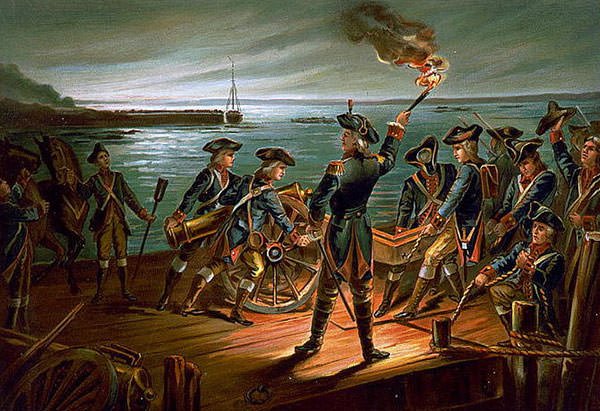
Battles of Trenton And Princeton
The Battle of Long Island was followed by a series of victories for the British which drove the Continental Army completely out of New York and to retreat through New Jersey and into Pennsylvania. The morale of the Continental Army was very low and many men had deserted. At such a juncture, George Washington laid out a bold plan to attack the enemy forces stationed at Trenton in New Jersey. The American forces first made the famous crossing of the Delaware River, which was accomplished “with almost infinite difficulty”. Then, on December 26, 1776, the American troops swiftly defeated the German missionaries at Trenton within an hour inflicting 100 casualties. The Americans only lost 2 men while 5 were wounded. More importantly, around 900 soldiers were captured along with provisions; and arms and ammunition. The American force then moved across the Delaware back into Pennsylvania with the captured soldiers and supplies.
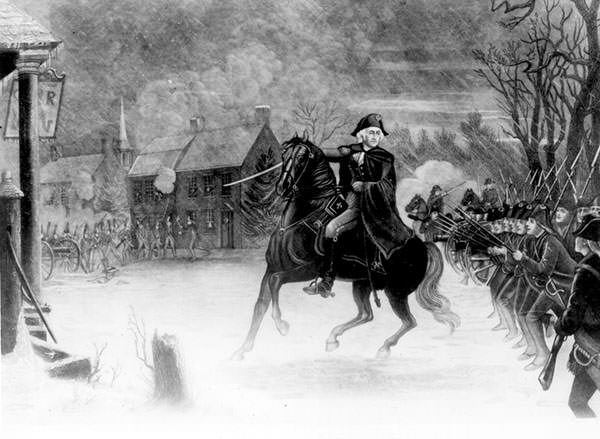
On December 30, 1776, Washington again crossed the Delaware River back into New Jersey; while his troops followed on January 3. The Patriots then launched a successful attack on British regulars at Princeton. 80 Americans were killed or wounded while the British casualties were around 100 to 170. Moreover, 194 to 280 British soldiers were captured. The dramatic American victories at Trenton and Princeton significantly boosted the morale of the Continental Army; inspired rebels in the colonies; and led to new recruits joining the forces. Thus, though they were small battles, the Battles of Trenton and Princeton are regarded as pivotal events of the revolution.

Battle of Brandywine
Frustrated as the war dragged on, the British changed their strategy. They decided to cut off New England from the rest of the colonies, contain the Continental Army and then defeat it. An army was assembled in Canada under the command of General Burgoyne. It was to advance down the Hudson Valley to Albany; while General William Howe was to march up the Hudson Valley from New Jersey. George Washington was handed a crushing defeat by Howe at the Battle of Brandywine on September 11, 1777. The battle cost the Americans more than 1,100 men, killed or captured, while the British lost approximately 600 men. Moreover, the defeat left the American capital Philadelphia vulnerable. Instead of chasing the Continental army, the British captured Philadelphia two weeks later on September 26. The Continental Congress abandoned Philadelphia, moving first to Lancaster for one day and then to York in Pennsylvania.

Battles of Saratoga
Though Howe was able to capture Philadelphia, he could not support Burgoyne. The British strategy of cutting of New England culminated at the Battles of Saratoga. In the battles, the American army convincingly defeated the British forces. The British suffered 500 casualties compared to 200 suffered by the Americans. Burgoyne was surrounded by an American army led by General Horatio Gates at Saratoga and, on October 17, 1777, he surrendered his entire army, numbering 5,800. The comprehensive victory gave France the confidence that America could win the war and this resulted in the formal Franco-American alliance in 1778. Due to this, the Battles of Saratoga are considered the turning point of the American Revolutionary War. The victory of Horatio Gates at Saratoga coupled with Washington’s loss at Brandywine led to the critics of Washington calling for his removal as Commander-In-Chief. However, Congress decided against any such action.
Siege of Yorktown
The defeat at Saratoga changed the British strategy and they now concentrated on the South. Their southern campaign began with the taking of the port of Savannah in December, 1778. The British then won major victories at Charleston and Camden during the spring and summer of 1780. However, in late 1780 and early 1781, the Americans handed the British crushing defeats at Battle of Kings Mountain and the Battle of Cowpens. Then, on August 19, 1781, 3000 American soldiers under George Washington and 4000 French soldiers under General Comte de Rochambeau marched from Newport, Rhode Island, to Yorktown, Virginia. During this much celebrated march, Washington send out fake dispatches to make the British Commander-in-Chief, Henry Clinton, believe that his army was going to attack New York. This convinced Clinton that Lord Cornwallis in Yorktown was not in any danger. On September 28, Washington completed encircled Yorktown beginning the siege against a contingent of 9,000 British troops. The siege lasted for 20 days. Franco-American casualties were 88 killed and 301 wounded. The British lost 156 men while 326 were wounded and 70 missing. More importantly, Cornwallis had to surrender his entire remaining force of more than 7,000. The Siege of Yorktown was the last major battle of the American Revolutionary War. It forced the British to negotiate an end to the conflict.
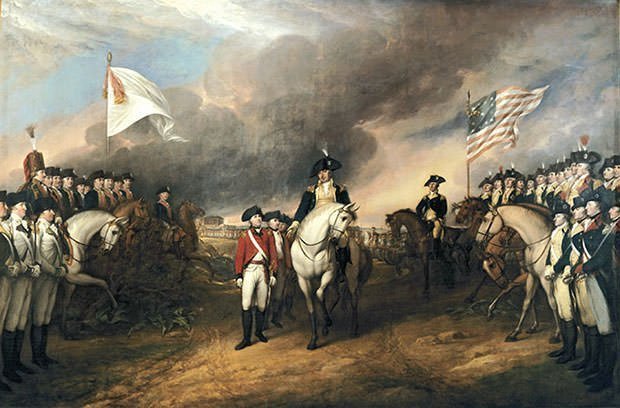
Treaty of Paris
Around six months after the Siege of Yorktown, in April 1782, peace negotiations between the conflicting parties began in Paris. The American Revolutionary War was officially brought to an end with a set of treaties known as the Peace of Paris, which were signed in 1783 and 1784. Of these, the most important was the Treaty of Paris, which was signed on September 3, 1783 by the representatives of King George III of Great Britain and representatives of the United States of America. The article 1 of this treaty acknowledged the existence of United States’ as free, sovereign and independent states. Instead of seizing power, George Washington resigned as commander-in-chief after the Treaty of Paris and returned as quickly as possible to cultivating his lands. Due to this, historians compare Washington with the ancient Roman aristocrat and statesman Cincinnatus, who served Rome during its crisis but after accomplishing his task resigned despite having near absolute authority.
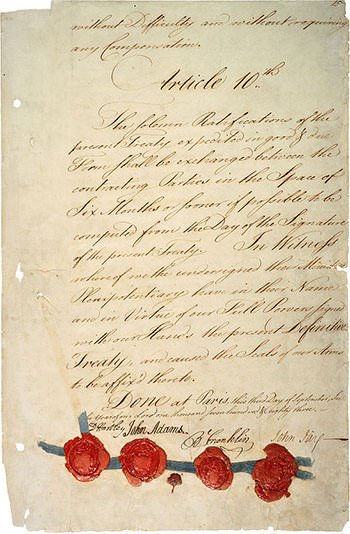
Post American Revolution
After the American Revolution, Washington played a key role in adopting and ratifying the Constitution. The United States Electoral College elected Washington as the first president of the United States in 1789. He received 100 percent of the electoral votes and remains the only American president to be elected unanimously. He was re-elected, again unanimously, in the 1792 election. He refused to run for the third term hence establishing the tradition of a maximum of two terms for a president, which later became law by the 22nd Amendment to the United States Constitution.

